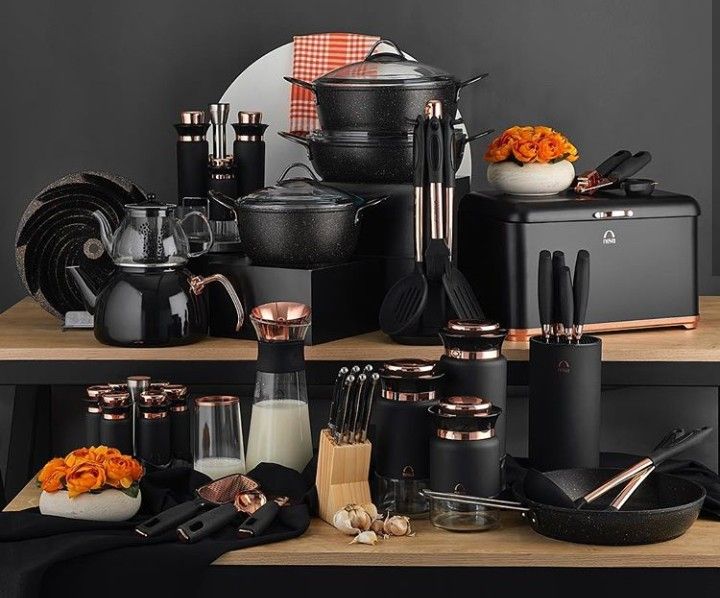The kitchen stands as a testament to human civilization’s progress, a space where raw ingredients undergo remarkable transformations into sustenance, comfort, and shared memories. Within this domestic laboratory, a silent orchestra of implements works in harmony—the often overlooked but essential kitchen tools that serve as the fundamental architects of our daily nourishment. These instruments represent the perfect marriage of form and function, evolving through centuries to become extensions of the cook’s creativity and skill. From the precise incision of a sharp blade to the gentle incorporation of a whisk, kitchen tools facilitate the magical transformation of separate components into cohesive culinary creations.
The historical journey of kitchen tools mirrors humanity’s own development, with archaeological evidence revealing specialized implements dating back to the earliest permanent settlements. Ancient grinding stones used to process grains into flour represent some of the first tools created exclusively for food preparation. As metalworking advanced, so did culinary implements, with bronze and iron age societies producing increasingly sophisticated cooking vessels, cutting tools, and food processing equipment. The development of trade routes facilitated the cross-pollination of culinary tool designs across cultures, each civilization contributing innovations that expanded what was possible in food preparation and preservation. This evolution continues today, with modern materials science enhancing traditional forms to create tools that would astonish our culinary ancestors.
The material composition of contemporary kitchen tools represents a fascinating convergence of tradition and innovation. Modern metallurgy produces knife blades that maintain their edge through years of use, while advanced polymer compounds create utensils that withstand extreme temperatures without warping or transferring heat. Non-reactive surfaces prevent flavor transfer between ingredients, and ergonomic designs reduce fatigue during extended food preparation sessions. Even classic materials like wood and stone have been reimagined through modern treatment processes that enhance their natural properties while minimizing limitations. This sophisticated material science operates in service of culinary artistry, creating tools that perform their functions so seamlessly they almost disappear from conscious thought during use.
The psychological relationship between cooks and their kitchen tools often transcends mere utility, evolving into a deeply personal connection. Many culinary professionals develop strong preferences for specific implements, sometimes carrying their favorite tools between workplaces. This bond develops through countless hours of use that create muscle memory and intuitive understanding between user and instrument. The perfect balance of a well-weighted knife, the comfortable grip of a seasoned wooden spoon, the reliable performance of a trusted skillet—these qualities become embedded in the cook’s sensory experience, enabling fluid movements without conscious deliberation. This harmony between human and tool represents the pinnacle of functional design, where the implement becomes a natural extension of the cook’s intention rather than a separate entity.
The organization of kitchen tools constitutes its own subtle art form, balancing accessibility, safety, and workflow efficiency. Different culinary traditions have developed distinct organizational philosophies, from the meticulous arrangement of French kitchen mise en place to the minimalist approach of Japanese cooking spaces. The placement of tools often follows a logical progression that mirrors the cooking process itself, with preparation implements stationed near cutting surfaces, cooking tools arranged within reach of heat sources, and serving pieces positioned for graceful transition to table. This spatial organization creates an intuitive workflow that allows cooks to move seamlessly between tasks, their hands naturally finding the right tool at the precise moment it’s needed. The physical arrangement of tools thus becomes a tangible manifestation of culinary methodology.
Cultural traditions find vivid expression through distinctive kitchen tools that have evolved to meet specific culinary requirements. The broad blade of a Chinese cleaver, the textured surface of a Mexican molcajete, the precise edge of a Japanese usuba knife—these implements represent generations of refinement for particular cooking techniques and ingredients. Learning to use these tools properly means engaging with culinary heritage that has been preserved and transmitted through the implements themselves. Even as global cuisine becomes increasingly interconnected, these culturally specific tools maintain their relevance, serving as tangible connections to culinary traditions that might otherwise be diminished through homogenization. They stand as reminders that how we prepare food can be as culturally significant as what we prepare.
The environmental considerations surrounding kitchen tools have gained importance in contemporary discussions about sustainability. High-quality implements represent the antithesis of disposable culture, with well-crafted tools often lasting generations when properly maintained. The choice between single-purpose gadgets and versatile multi-use tools reflects broader values about efficiency, consumption, and environmental responsibility. Many cooks are rediscovering the satisfaction of maintaining and repairing quality tools, finding meaning in the process of caring for implements that will serve them for years. This perspective transforms the acquisition of kitchen tools from casual consumerism to thoughtful curation of companions for one’s culinary journey.
The future of kitchen tools continues to evolve alongside technological advancements and changing culinary practices. Modern materials science develops new composites and alloys that offer improved performance, while ergonomic research creates implements that reduce physical strain. Smart technology increasingly integrates with traditional tools, adding digital precision to analog forms. Yet despite these advancements, the fundamental purpose remains unchanged: to extend human capability in the transformation of ingredients into nourishment. The best kitchen tools never overshadow the cook’s skill but rather enhance it, remaining silent partners in the creative process that turns raw materials into meals that feed both body and spirit.
In the final analysis, kitchen tools represent something profoundly human—the persistent desire to shape our environment to better meet our needs, to transform nature’s bounty into cultural expression, and to create gathering points where nourishment becomes the medium for connection. These implements serve as bridges between imagination and realization, between individual creativity and shared tradition. They remind us that the act of preparing food remains one of our most fundamental connections to both nature and culture, and that the right tool in the hand can feel less like an instrument and more like an extension of human creativity itself. Through these humble implements, we participate in a timeless ritual that transforms mere sustenance into something approaching art.

